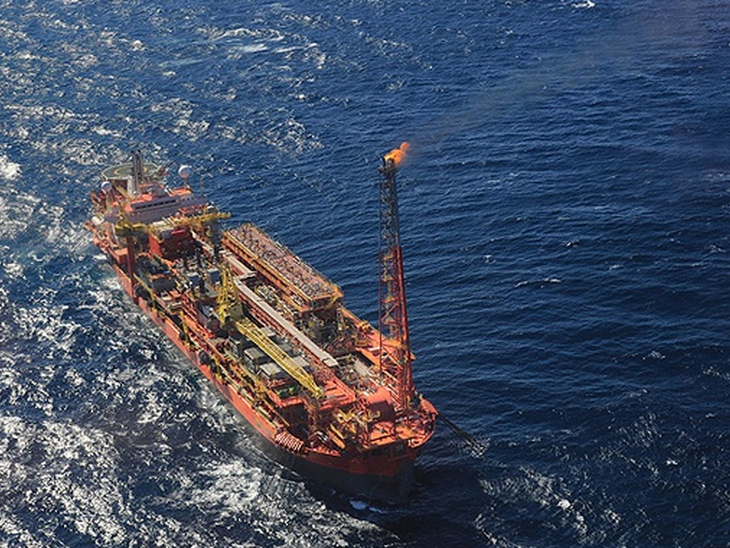
Oil production in Brazil was approximately 2.081 million barrels per day.
ANP
Oil production in Brazil in November 2013 was approximately 2.081 million barrels per day ( bbl / d ) , an increase of about 1.8 % compared with the same month in 2012 and about 0.1 % compared to the previous month. The production of natural gas was around 79.1 million cubic meters per day (m³/d), an increase of 7.8 % from the same month in 2012 and 8.5 % compared to the previous month.
According to the National Agency of Petroleum, Natural Gas and Biofuels (ANP), the production of oil and natural gas in Brazil was approximately 2,578 million barrels of oil equivalent per day (boe/d).
The pre-salt production was 339,400 bbl / d of oil and 11.5 million m³ / d of natural gas , totaling 412.0000 boe / d , an increase of 10.8 % over the month above. This production was coming from 28 wells in the fields of the Baleia Azul; Caratinga and Barracuda ; Jubarte ; Linguado, Lula, Marlin and Voador ; Marlim Leste ; Pampo ; Pirambu ; Sapinhoá , and Trilha.
The burning of natural gas was approximately 3.8 million m³ / d , a decrease of 16.4 % compared to the same month in 2012 and an increase of approximately 34.2 % compared to the previous month . On increasing the burning compared to October , the largest increase was recorded in the Lula field , and the main reason was the start of production tests in two Early Production Systems (PAS ), across platforms and Dynamic Producer FPSO Cidade de São Vicente. As a temporary systems , no flow lines of the natural gas was produced, being almost totally burned on these platforms. The use of natural gas for the month was 95.2 %.
The Marlim Sul field in the Campos Basin , was the greater oil production in the month , with an average of 275,100 bbl / d, and Manati, in the Camamu Basin was the largest producer of natural gas , an average of 6.2 million m³ / d. The Papa-Terra field located in the Campos Basin and operated by Petrobras , went into production through P -63 platform. The average volume of oil produced was around 4300 bbl / d.
Approximately 92.1 % of the production of oil and natural gas came from fields operated by Petrobras . On average , 91.7 % of oil production and 71.8 % of natural gas production in Brazil were extracted from offshore fields. The P-56 platform , located in the Marlim Sul field , which was the highest recorded production through eight wells connected to it , around 137,800 boe / d. Fields whose contracts are marginal accumulations produced a total of 125.2 bbl / d of oil and 2.8 billion m³ / d of natural gas . Among these fields , Bom Lugar, operated by Alvopetro, was the largest producer of oil and natural gas , with 39.2 boe/d.
The production coming from mature basins land ( fields / long-term watershed of the Holy Spirit , Potiguar , Reconcavo , Sergipe and Alagoas tests ) was 280,200 boe / d , with 183,900 bbl / d of oil and 15 3 million m³ / d of natural gas . Of this total , 3.8 Mboe / d were produced not by concessions operated by Petrobras, with 346 boe / d in the State of Alagoas , 1,390 boe / d in Bahia , 40 boe / d in the Holy Spirit , 1,430 boe / d in Rio Grande North and 640 boe / d in Sergipe .
In November 2013 , 313 concessions operated by 24 companies were responsible for domestic production . Of these , 80 are 233 terrestrial and maritime concessions. The production of oil and natural gas in Brazil was coming from 8,972 wells, 768 and 8,204 seafarers land . The field with the highest number of producing wells was Canto do Amaro , Potiguar basin , with 1,105 wells . Marlin was the maritime field with highest number of producing wells , 57 in total.

Contact us
2